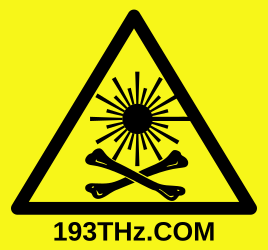

April 2024
Helium-Neon laser tubes for use with an external cavity are pretty rare and expensive, and making them yourself is very difficult unless you have expert glassblowing skills. But, for red wavelengths, it turns out to be possible to use a relatively common and lower-cost green tube. This works for two reasons. First, the gain of green tubes is relatively high (as the green line is weak) so the laser stays above threshold despite the losses from the presence of the built-in mirrors. Second, at least on the tube that I had experimented with, the built-in mirrors have high transmission in the red portion of the spectrum where the tube is not supposed to lase.
Simply placing the tube between a pair of dielectric mirrors (Thorlabs BB1-E02P broadband plane mirrors with the back side polished) and aligning them using kinematic mounts (the original green beam is very useful - do it in the dark as the beam on the HR side is very weak) resulted in laser action simultaneously at 612nm, 633nm and 640nm, and the original green line was suppressed. See also a video of fiddling with the alignment, where the original green beam is visible when the external mirror is misaligned. The three dots on the piece of paper are coming from a diffraction grating placed on the other side of the tube.
In the setup shown, the laser is not very stable due to the use of low-quality optical mounts, and especially of plane mirrors so I can spend money on $2,000 cocktails instead of custom dielectrics. With more work (and expense) on the optomechanics, this hack might serve as the basis for a DIY iodine-stabilized HeNe laser, as the (narrow-linewidth!) intracavity power is likely sufficient to saturate the I2 transitions and perform Doppler-free spectroscopy. One difficulty could be to separate the I2 signal from the etalon effects caused by the original laser cavity.